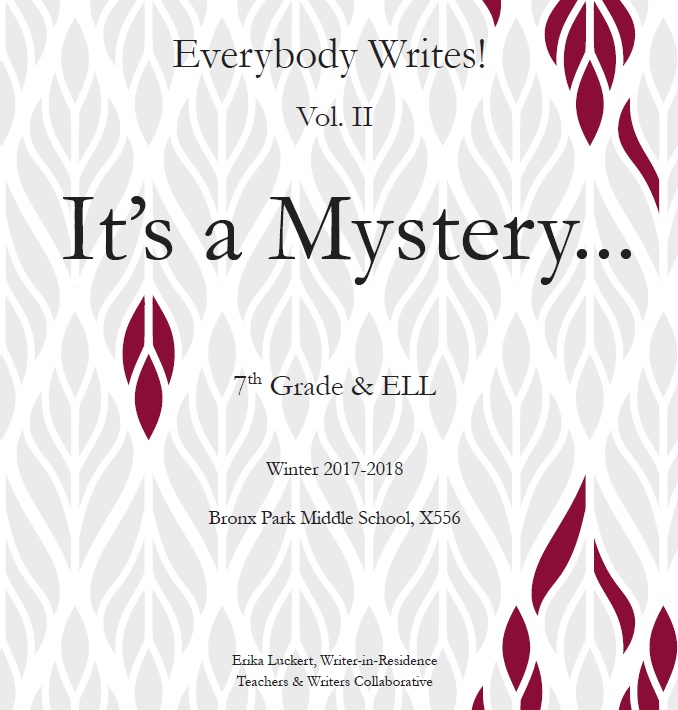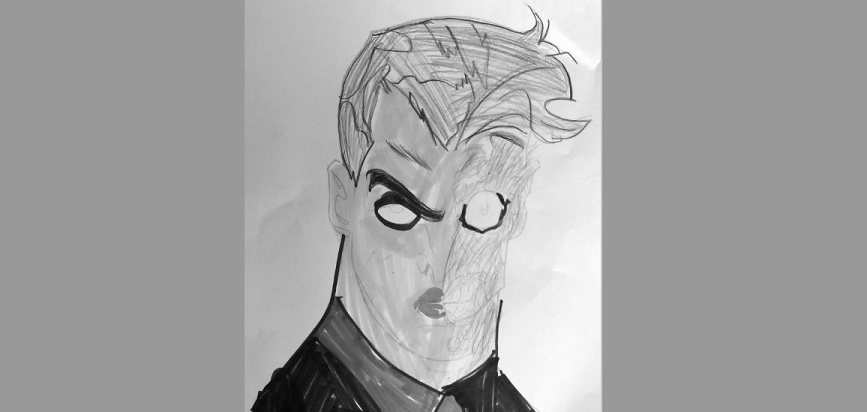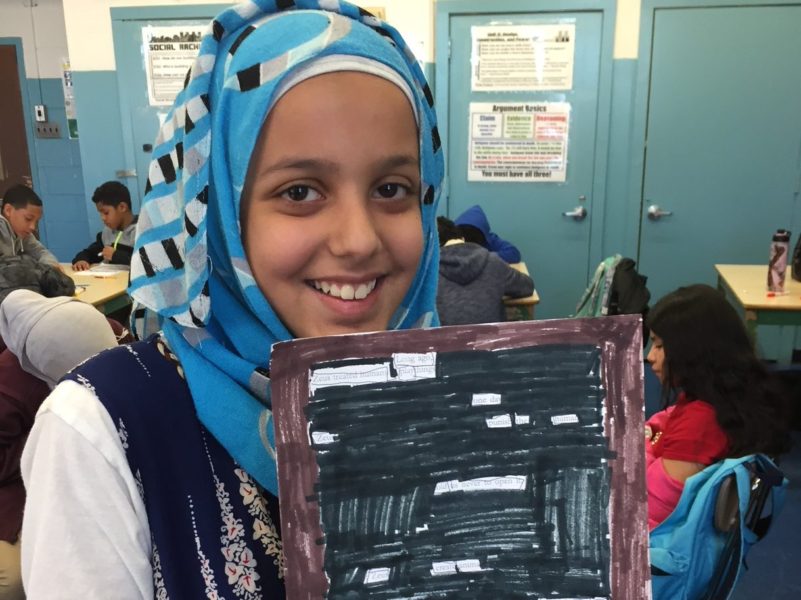
This anthology is the 2nd of 3 anthologies that gather the creative work that Bronx Park students and teachers created during this residency; it features the work of 7th Grade and ELL (English Language Learner) students.
I visited the 7th grade classes during their Murder Mystery unit. In our time together, we talked a lot about that special mix of fear and excitement that keeps you turning the pages in a murder mystery, and we worked on writing poems that would capture that same mood.
We turned ordinary rooms into mysterious crime scenes, experimenting with ways to make items like refrigerators and televisions into something spooky. Using the work of poets Thomas James and Danielle Pafunda as inspiration, students took on the perspective of a dead body, and wrote poems that imagine what would be said if the dead could speak. They used vocabulary from the model poems to add life to their dead body poems, and worked on descriptions that are both beautiful and ugly.
Finally, students learned that writing is rewriting, as they revised their poems for publication, making each one the best that it can be. This anthology also has illustrations contributed by Mr. Jacobs from his art classes, where students were asked to create “ugly art”—I think it makes a perfect pairing with the ugly (and beautiful) details of a murder mystery!
As I read these poems, I am struck by the vivid descriptions that students created, and their strong sense of suspense and intrigue. I think that, even in the briefest examples, they’ve managed to capture the essence of the murder mystery genre, that mix of excitement and fear. Reader beware – some of these poems are pretty mysterious! When I worked with ELL students, we looked at a different sort of mystery—that mysterious space that exists between languages, or in languages that we don’t yet know. We explored how poetry can give us a window into another language, or into our own.
Together, we read a few of Guillaume Apollinaire’s French caligrammes, poems where the words take the shape of the subject of the poem. We discovered that, even without knowing French, it was possible to glean meaning from these poems, and even to translate them! Students designed their own caligrammes that will teach you a word in their native language.
We also read John Clare’s “Transcription of a Nightingale’s Song,” where the poet finds a way to convey that beautiful birdcall through our English alphabet. Students responded with a New York twist – transcribing the song of a pigeon in an alphabet of their choosing. With Spanish-speaking students, we also talked about poetry that crosses the language divide, that is written in “Spanglish,” and students wrote their own multilingual Spanglish poems.
Throughout my work with Bronx Park’s English Language Learners, I was astonished by their capacity for linguistic creativity—working within, and among, and between languages, in a space that sometimes feels mysterious, but can also feel like home.
Erika Luckert
Writer-in-residence
Featured Writing
I See Humans But No Humanity
by Nyathesia (7th grade)I see humans but no humanity.
However I do see humans kill
animals that benefit the earth
more than they do.I do see humans
hurt their loved ones for
Poison to put in their veins.I do
see humans play with each
other’s emotions for no reason
other than to benefit themselves.I see humans do not have humanity
we don’t have the ability, no, they
don’t use their ability to feel, love
and show compassion.



